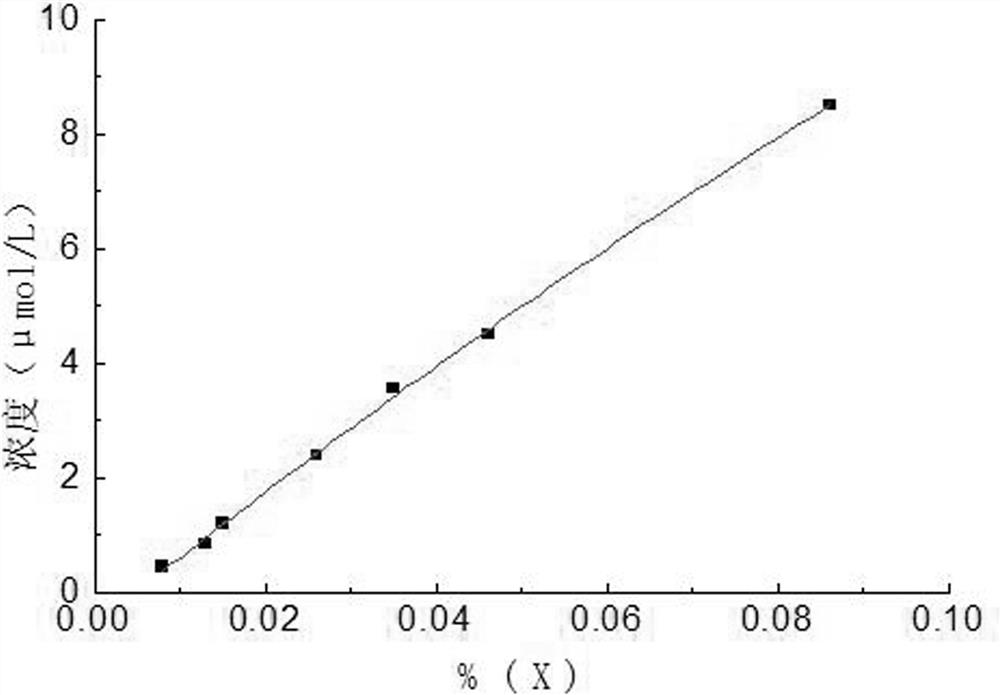A method for preparing dihydroactinolactone by microbial fermentation of carotenoids
A dihydrokiwifruit lactone and microbial fermentation technology, which is applied in the field of food biology, can solve the problems of strict preparation conditions and high technical requirements of dihydrokiwifruit lactone, and achieve the effects of facilitating large-scale industrial production, stable technical parameters and natural smell.
- Summary
- Abstract
- Description
- Claims
- Application Information
AI Technical Summary
Problems solved by technology
Method used
Image
Examples
Embodiment 1
[0036] A method for preparing dihydroactinolactone by microbial fermentation of carotenoids is obtained through the following production steps.
[0037] (1) Strain activation: Pick the fermentation strain from the preservation medium, inoculate it into the activation medium and activate it for 48 hours;
[0038] The fermentation strain is specifically the preservation number preserved by the China Center for Type Culture Collection (CCTCC): 2017593, the strain: Bacillus alba SH161, which is a publicly available strain;
[0039] The activation medium is glucose 10 g / L, peptone 5 g / L, malt extract 3 g / L, yeast powder 3.0 g / L, agar powder 20 g / L, β-carotene 80 mg / L, 121 ℃, sterilize for 20 min.
[0040] (2) Preparation of seed solution: inoculate the activated strain in step (1) into the seed medium, and culture on a shaker at 30°C and 160 r / min for 48 hours to prepare the seed solution;
[0041] The seed medium formula: glucose 10 g / L, peptone 5 g / L, malt extract 3 g / L, yeast ...
Embodiment 2
[0049] A method for preparing dihydroactinolactone by microbial fermentation of carotenoids is obtained through the following production steps.
[0050] (1) Strain activation: Pick the fermentation strain from the preservation medium, inoculate it into the activation medium and activate it for 72 hours;
[0051] The fermentation strain is specifically the preservation number preserved by the China Center for Type Culture Collection (CCTCC): 2017593, the strain: Bacillus alba SH161, which is a publicly available strain;
[0052] The activation medium is glucose 10 g / L, peptone 5 g / L, malt extract 3 g / L, yeast powder 3.0 g / L, agar powder 20 g / L, β-carotene 80 mg / L, 121 ℃, sterilize for 20 min.
[0053] (2) Preparation of seed solution: inoculate the activated strain in step (1) into the seed medium, and culture on a shaker at 28°C and 160 r / min for 36 hours to prepare the seed solution;
[0054] The seed medium formula: glucose 10 g / L, peptone 5 g / L, malt extract 3 g / L, yeast ...
Embodiment 3
[0062] A method for preparing dihydroactinolactone by microbial fermentation of carotenoids is obtained through the following production steps.
[0063] (1) Strain activation: Pick the fermentation strain from the preservation medium, inoculate it into the activation medium and activate it for 48 hours;
[0064] The fermentation strain is specifically the preservation number preserved by the China Center for Type Culture Collection (CCTCC): 2017593, the strain: Bacillus alba SH161, which is a publicly available strain;
[0065]The activation medium is glucose 10 g / L, peptone 5 g / L, malt extract 3 g / L, yeast powder 3.0 g / L, agar powder 20 g / L, β-carotene 80 mg / L, 121 ℃, sterilize for 20 min.
[0066] (2) Preparation of seed solution: inoculate the activated strain in step (1) into the seed medium, and culture on a shaker at 30°C and 160 r / min for 48 hours to prepare the seed solution;
[0067] The seed medium formula: glucose 10 g / L, peptone 5 g / L, malt extract 3 g / L, yeast p...
PUM
 Login to View More
Login to View More Abstract
Description
Claims
Application Information
 Login to View More
Login to View More - R&D
- Intellectual Property
- Life Sciences
- Materials
- Tech Scout
- Unparalleled Data Quality
- Higher Quality Content
- 60% Fewer Hallucinations
Browse by: Latest US Patents, China's latest patents, Technical Efficacy Thesaurus, Application Domain, Technology Topic, Popular Technical Reports.
© 2025 PatSnap. All rights reserved.Legal|Privacy policy|Modern Slavery Act Transparency Statement|Sitemap|About US| Contact US: help@patsnap.com


